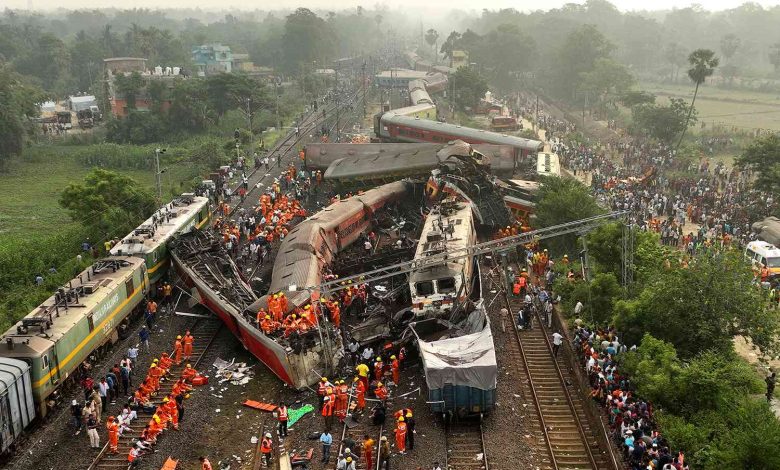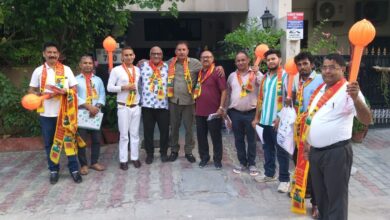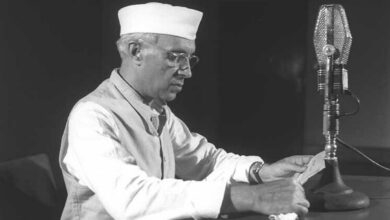
Indian Railways, the fourth-largest railway network in the world, plays a pivotal role in connecting the vast subcontinent. With a legacy dating back to the 19th century, Indian Railways has been a symbol of national integration, economic progress, and cultural amalgamation. However, this giant of a network has been riddled with challenges, including safety concerns, operational inefficiencies, and quality compromises. This article aims to explore the historical journey of Indian Railways, delve into the causes and impact of various accidents, evaluate the role of the Ministry of Railways, and scrutinize the issues related to Vande Bharat trains, delays, and service quality.
A Brief History of Indian Railways
The history of Indian Railways dates back to April 16, 1853, when the first passenger train ran from Bombay (now Mumbai) to Thane. Covering a distance of 34 kilometers, this journey marked the beginning of a new era in transportation in India. Over the decades, the network expanded rapidly, reaching remote corners of the country and becoming a crucial lifeline for millions.
During the British colonial period, the railways were primarily built for administrative and commercial purposes. Post-independence, the Indian government nationalized the railways in 1951, consolidating various private railway companies into a single entity, Indian Railways. This move aimed to streamline operations, enhance connectivity, and ensure equitable development.
Today, Indian Railways operates over 67,000 kilometers of track, serving more than 8 billion passengers and transporting over a billion tons of freight annually. Despite its extensive reach and crucial role in the economy, the railways face significant challenges, particularly in terms of safety and quality of service.
Accidents and Their Causes
Indian Railways has a troubling history of accidents, many of which have resulted in significant loss of life and property. Some notable accidents include:
The Gaisal Train Disaster (1999): This collision between the Brahmaputra Mail and the Awadh-Assam Express in West Bengal resulted in over 285 deaths and numerous injuries. The accident was attributed to human error and signaling failures.
The Firozabad Rail Disaster (1995): A collision between the Kalindi Express and the Purushottam Express near Firozabad, Uttar Pradesh, killed 358 people. The cause was determined to be an ill-timed attempt by the Kalindi Express driver to move the train onto the main line without proper clearance.
The Jnaneswari Express Derailment (2010): Suspected sabotage by Maoist insurgents led to the derailment of the Jnaneswari Express in West Bengal, causing over 150 deaths. The derailment was followed by a collision with an oncoming goods train, exacerbating the tragedy.
The Indore-Patna Express Derailment (2016): The derailment near Pukhrayan, Uttar Pradesh, resulted in over 150 fatalities and 200 injuries. The cause was attributed to track fractures, highlighting the poor maintenance of railway infrastructure.
The Amritsar Train Tragedy (2018): During the Dussehra festival, a train plowed through a crowd watching fireworks near Amritsar, killing around 60 people. The incident underscored the lack of crowd control and safety measures at public events near railway tracks.
The primary causes of these accidents can be categorized into:
Human Error: Inadequate training, fatigue, and negligence of railway staff often lead to tragic outcomes.
Technical Failures: Faulty signaling systems, track defects, and outdated rolling stock contribute significantly to accidents.
Infrastructure Issues: Poorly maintained tracks, bridges, and stations are a major concern. The extensive network requires constant upkeep, which is often neglected.
Sabotage and Vandalism: Insurgent activities and deliberate acts of sabotage have also been responsible for several accidents.
The Role of the Ministry of Railways
The Ministry of Railways is responsible for the overall management and governance of Indian Railways. It formulates policies, allocates budgets, and oversees safety and operational protocols. Despite these responsibilities, the ministry has often been criticized for its inefficiencies and lack of proactive measures to prevent accidents.
- Safety Initiatives:The Ministry has launched various safety initiatives, such as the installation of Anti-Collision Devices (ACDs), modernization of signalling systems, and implementation of the Rashtriya Rail Sanraksha Kosh (National Railway Safety Fund). However, the execution of these initiatives has been inconsistent, leading to recurring safety lapses.
- Infrastructure Investment:While there have been significant investments in infrastructure development, including the construction of dedicated freight corridors and high-speed rail projects, the existing network’s maintenance often takes a backseat. The focus on high-profile projects sometimes overshadows the pressing need for upgrading and maintaining current infrastructure.
- Human Resource Management:The ministry has been slow in addressing the issues related to workforce training and management. There is a need for continuous training programs and better working conditions to reduce human error and improve overall efficiency.
- Transparency and Accountability:The ministry’s response to accidents often involves setting up inquiry committees whose findings and recommendations are rarely made public or implemented effectively. This lack of transparency and accountability undermines public trust and hampers safety improvements.
The Vande Bharat Express: A Compromised Quality?
The Vande Bharat Express, also known as Train 18, was launched with much fanfare as India’s first semi-high-speed train, designed and manufactured domestically. It represents a significant leap in terms of speed and comfort for Indian passengers. However, several issues have marred its reputation:
- Quality Concerns: Passengers have reported various problems, including malfunctioning automatic doors, issues with the air conditioning system, and uncomfortable seating. These issues indicate a lack of thorough testing and quality assurance before the train’s launch.
- Operational Challenges: The Vande Bharat Express requires a dedicated and well-maintained track to achieve its optimal speed of 160 km/h. However, the existing tracks are often not up to the mark, leading to frequent slowdowns and delays.
- Impact on Other Trains: The prioritization of the Vande Bharat Express has caused delays for other trains sharing the same routes. The semi-high-speed train requires clear tracks, leading to disruptions in the schedules of regular trains, which affects thousands of passengers daily.
Delays and Their Ripple Effect
Train delays are a common occurrence in India, affecting millions of passengers. The causes are multifaceted:
- Congested Networks:The Indian railway network is highly congested, with passenger and freight trains vying for the same tracks. This congestion often leads to delays, especially on busy routes.
- Infrastructure Bottlenecks: Inadequate infrastructure, such as insufficient number of tracks, outdated signaling systems, and poorly maintained stations, contribute significantly to delays.
- Priority Issues: Premium trains like the Vande Bharat Express are often given priority, causing delays for other trains. This preferential treatment creates a ripple effect, disrupting the schedules of numerous other trains.
- Maintenance Work: Routine maintenance and emergency repairs on tracks and rolling stock can also cause delays. The lack of proper planning and scheduling for such maintenance exacerbates the problem.
Cleanliness and food quality on Indian trains have been long-standing issues that significantly affect passenger experience
- Unclean Coaches: Despite efforts to improve cleanliness, many trains remain dirty, with overflowing toilets, unclean seats, and littered compartments. The Swachh Rail, Swachh Bharat initiative has had limited success due to inconsistent implementation and monitoring.
- Food Quality:The quality of food served on trains is often criticized for being substandard and unhygienic. Complaints about stale, poorly cooked, and overpriced food are common. The catering services, managed by the Indian Railway Catering and Tourism Corporation (IRCTC), have struggled to maintain consistent quality across different trains and routes.
- Vendor Issues: The reliance on external vendors for catering services often leads to quality control issues. There have been instances of food poisoning and contamination, raising serious concerns about passenger safety.
Indian Railways, despite its monumental role in the country’s transportation network, faces severe challenges that undermine its efficiency and safety. The history of accidents and the recurring issues with infrastructure and human resource management point to systemic problems that need urgent attention. The Ministry of Railways must prioritize safety, transparency, and accountability to rebuild public trust and ensure the railway’s sustainable growth.
The introduction of the Vande Bharat Express, while a step towards modernization, highlights the need for a balanced approach that does not compromise the quality of service for other passengers. Addressing the issues of cleanliness and food quality requires stringent monitoring and a commitment to improving passenger experience.
In conclusion, Indian Railways stands at a crossroads where decisive action and comprehensive reforms can transform it into a world-class transportation network. Without these measures, the challenges will continue to impede its progress, affecting millions of passengers who rely on it daily.




